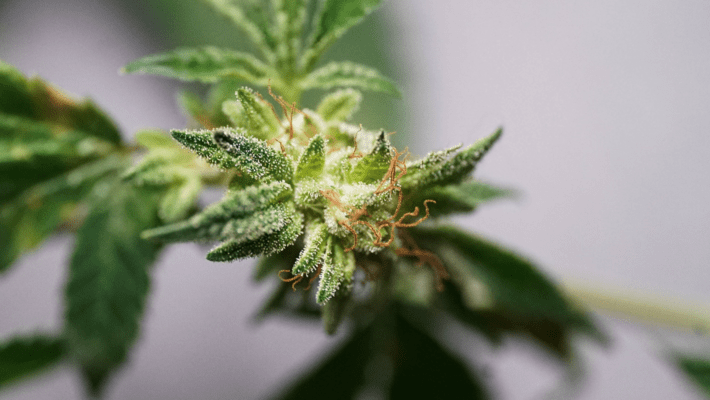
Cannabis Strains: How Reliable are Weed Strain Names?
Published on 4/9/22
Let's say your favorite strain of cannabis is Blue Dream and you buy it at any dispensary you go to when it's available. You may have noticed that each time you buy it, there are differences in the Blue Dream. Why is this the case? Let's dive into what a strain is and how even the same strains will differ between cultivators.
What are Weed Strains?
Cannabis as we know it has been around for thousands of years - the earliest evidence of humans using cannabis for medicinal purposes is over 4,500 years ago in western China. Cannabis cultivated from its original ancestral location is called a landrace strain - and there aren't too many of these anymore. Like any commodity, the cannabis plant has traveled and been cultivated in various civilizations over time from those landrace strains. As plants are grown, cultivated, shared, and dispersed, changes begin to appear that result in new strains. Cross-pollination, environments, and selective breeding cause plants to evolve. "Strains" are not exclusive to cannabis -they are genetic variations that occur in nature, from plants to microorganisms such as viruses and bacteria. In cannabis, however, a strain is a specific variety of flower with its own unique characteristics, including flavor, aroma, appearance, and effects. There are thousands of cannabis strains, all offering a unique take on cannabis.
Key Differences Between Strains of Weed
 Unsplash
UnsplashStrains of weed are categorized into three categories: Sativa, Indica, and hybrid. Sativa plants are tall and thin. They usually have high THC content and are associated with an energetic, creative mind high. Indica plants are short and stocky with broad leaves and can also have high THC levels and usually have much higher CBD levels. Indicas are associated with a relaxing body high, ideal for reducing nausea and anxiety. Hybrid strains are a combination of Sativa and Indica, taking characteristics from the original strains they are bread from.
On a micro-level, the main differences between any strain consumers are most concerned with are aroma, flavors, and effects (both psychoactive and medicinal). Aromas and flavors are decided mainly by a plant's terpenes, a naturally occurring compound that also dictates the effects of cannabis. There are nine common terpenes, all of which have unique associated flavors and aromas - the varying levels of these terpenes within a strain provide the final aroma and flavor. The effects of a given strain are most directly influenced by THC and CBD levels (two of the most prominent cannabinoids within cannabis). However, there are over 400 known chemical compounds within cannabis. All of these compounds work together to create a strain's unique entourage effect, which scientists are still learning more about every year. Each strain has varying levels of these 400+ compounds, meaning every strain will have a slightly different type of high and offer different medical benefits, from reducing anxiety to helping prevent seizures.
Here's a list of strains considered to be some of the best strains ever:
- Blue Dream - Sativa
- Super Silver Haze - Sativa
- Jack Herer - Sativa
- Chernobyl - Hybrid
- White Widow - Hybrid
- Hindu Kush - Indica
- OG Kush - Indica
These strain names showcase the uniqueness of the cannabis naming system. Cannabis strain names are decided several different ways - there is no single standard. At the beginning of modern naming, when strains were being collected worldwide, their names were associated with their original locations (i.e., Panama Red and Afghan Kush). These are landrace strains, by the way. Once these landrace strains were named and collected, they were bred for market and named after the breeder, in honor of a famous cannabis icon (i.e., Jack Herer), by the strain's flavor profile (i.e., Key Lime Pie and Banana Kush), or as a play on words with the original strains when it's a hybrid (i.e., Berry White). Ultimately, the name is up to the breeder, but these are the most common naming systems around.
Why the Same Strains Might Be Different
 Unsplash
UnsplashThe same strain can be created by different breeders, however. Different breeders will use different plants of the same strain to produce their own version of a given strain. Because so many factors go into breeding, cultivating, and smoking weed, there's no way to replicate the same product exactly. Ultimately, two factors decide the structural formation and observable characteristics of a cannabis plant: genetics and environment. The genetics of a plant, as we discussed, change over time and adapt through environmental necessity, cross-pollination, and, when humans are involved, selective breeding. Two plants of the same strain grown in different places will be affected by their specific environment and breeding/cultivation methods. Because breeders and growers are rarely going to have access to the same plants, work in the same settings and use the same techniques, there will almost always be differences in the final product, even if they are technically the same strain.
Creating a Standard: Cannabis Appellations
In addition to the above variables, there's no guarantee that a breeder uses the exact strains they claim to use - cannabis is a very self-regulated industry, and many things are based on an honor system. Appellations can change this lacking standard. Appellations are best known in the wine industry. Specific regions supply their own list of guidelines and regulations - what types of grapes are allowed, alcohol by volume limits, how much can be grown, etc. All of this is regulated by appellations. Bringing appellations to cannabis will help regulate what types of cannabis are grown where, how much can be grown, and the quality/type produced in a given region. Appellations may begin to truly hold marijuana strain names accountable to some standard.
Have you run into the problem of not finding a consistent version of your favorite strain? What is your favorite strain, and what sets it apart from others? Let us know in the comments below.
